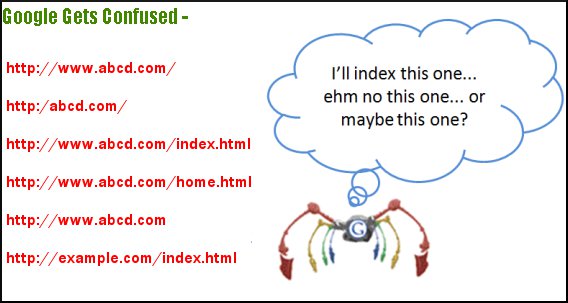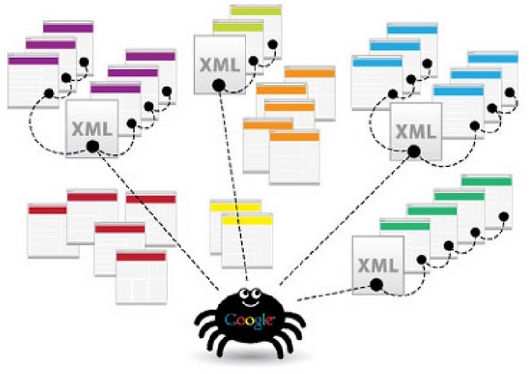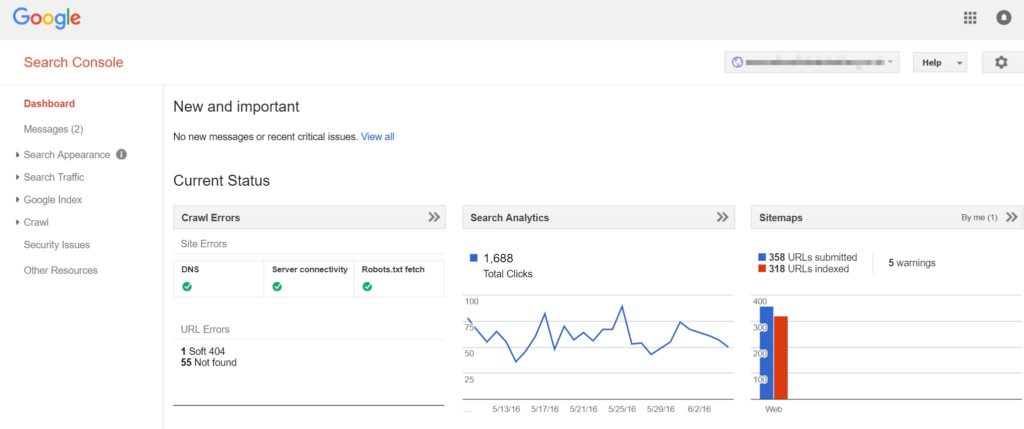7 Basic Web Development Mistakes That Can Ruin A Website After Launch
Your website is looking good, the content has been added, the CMS is working, the client is satisfied. So, time to launch the website? Well, not before you cross-check some of the basic mistakes which often occur during the website development process.
A website design is a culmination of many small details which just increases your chances of screwing up things. Thousands of websites get launched on a daily basis but are not producing optimal results. The difference lies in attention to small details.
Ofcourse, there is no bigger joy than seeing your creation go live over the internet, but if the same creation does not reap benefits, the whole effort is wasted. Remember quality lies in the details.
Read Also: 6 Fundamental Steps of SEO On Page Optimization
To make things easier, here is a checklist you can cross-check, before the website launch –
#1. Resolve Canonical Issues
Canonical Issues arise when search engines can access your website through different URLs. Search engines get confused and ends up indexing your website under all the different URLs, which makes all these URLs like duplicate content, hampering the page ranking of the website.

The most effective way to resolve Canonical Issues is a permanent 301 redirect. The main idea of this solution is to choose the best suiting URL of your website from the multiple URLs that were available over the internet.
Read Also: How to Index a Blog in Google Search in 5 Minutes
#2. Remove Underscore in URL
Many developers use underscores (_) in between words in URLs, instead of hyphens (-). This is a common web development error and has a heavy impact on the search engine results, as URLs are also a determining factor for search results.
If you look at the top rated web pages, you will see that keywords or words in these URLs are separated with a hyphen instead of an underscore. This is because Google tends to consider underscores as jointers or concatenations while hyphens are considered as space.
Google, as well as other search engines, consider hyphen as space. Try typing “good-looking-girl” and compare the search results with the search results for “good looking girl”; the results will be exactly the same. Therefore using a URL with hyphen i.e. www.paint.com/blogs/how-to-oil-paint is better than a URL with underscore i.e. www.paint.com/blogs/how-to_oil_paint.
#3. Include XML Sitemap
Sitemaps assist website owners in the task of informing search engines about pages that are available for crawling on their website. It is also known as URL inclusion protocols as they advise search engines on what to crawl.
Introduced by Google in 2005, the sitemap is essentially a document that enlists all the URLs or web pages of a website. It also enlists details like when the page was last modified, frequency at which a page changes and which pages are to be given more priority.
Moreover, specific sitemaps are created for the different types of content like for videos or blogs. The importance and impact of sitemaps cannot be downplayed. As they help search engines to easily navigate through a website, it helps in better indexing of the content.
In simple words, if a website is considered as a structure then the sitemap is the blueprint of the structure.

#4. Add Google Analytics
Google Analytics, a freemium web analytics service offered by Google in 2005, helps to track the activities of a website. It not only helps in measuring the conversion rates and sales figure of a website but offers a much detailed report on almost every aspect of the website and its web traffic.
Here are some of the benefits of using this service –
- Yes, it’s free, but that is not all. This free app offers you a lot more functionalities than any of its competitors.
- It lets you know easily how traffic is generated or how visitors to the website are locating you.
- The application helps in identifying the pages and links that are mostly visited.
- It also helps in analyzing visitor behavior and activities.
- It’s a great application to fine tune your website.
#5. Verify with Google Search Console
The Google Search Console is a freemium service. Verifying through it will help your website’s presence in Google search results. Through this service, you will know how and when Google indexed your page and the different crawl errors.
Here’s a step-by-step guide on how to get your website registered in Google Search Console:
- Step 1 – Get registered with Google Search Console
- Step 2 – Copy your website’s HTML tag
- Step 3 – Paste the website’s HTML tag to the code injection
- Step 4 – Get the website verified
- Step 5 – Index the site and crawl errors
Below is a overview of the Google Search Console dashboard

#6. Validate Online Form and add Thank You Page
For any business, the website is a marketing investment to ensure a steady flow of customers. One of the most common ways of acquiring online sales leads is through web forms. Such forms are a convenient solution to extract information from website visitors.
Therefore, make sure the online form is validated and works properly. Also adding a “Thank You” page for visitors who fill the form can be quite beneficial. Here are four reasons why a thank you page is better than just a confirmation message –
- Helps in tracking marketing results
- Keeps visitors engaged
- Adds personal touch
- Includes a humble acknowledgement
#7. Check and Recheck the content
A website is your business card on the website, remember the first impression lasts long, so create to impress.
Make sure all information or links should be working. Make sure the telephone number on the website has “Tel” scheme so that visitors can call instantly from the mobile. If possible add location of your company through Google maps; this will add value to your website.
Content is very important for a website. Make sure the content is well researched, spelling mistake-free and the information are correct. Again, if you have created the website on WordPress, make sure no dummy text of the theme remains in the completed website design.
Read Also: 20 SEO Checklist for Web Development Projects
Conclusion
As they say, the devil lies in the details; this is especially true in the case of creating a website. The above are some of the basic errors that you need to watch out for before a website is launched. The more attention you pay to details, the lesser devils your will face.
- Do’s and Don’ts of Mobile App Marketing via Social Media - March 30, 2019
- 8 Digital Marketing Trends in 2019 You Should Follow - February 6, 2019
- Voice Search Optimization: Tips for Your Creative Content Marketing Plan - July 30, 2018



